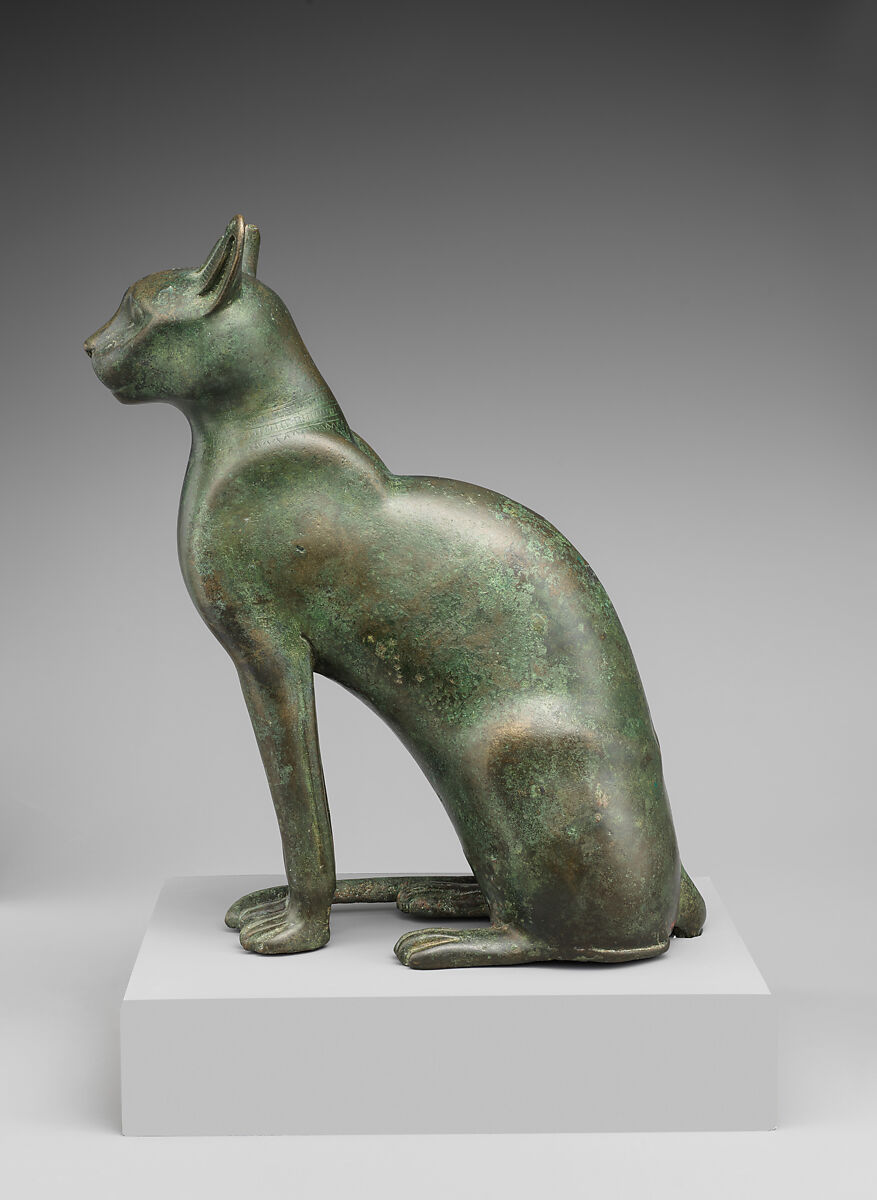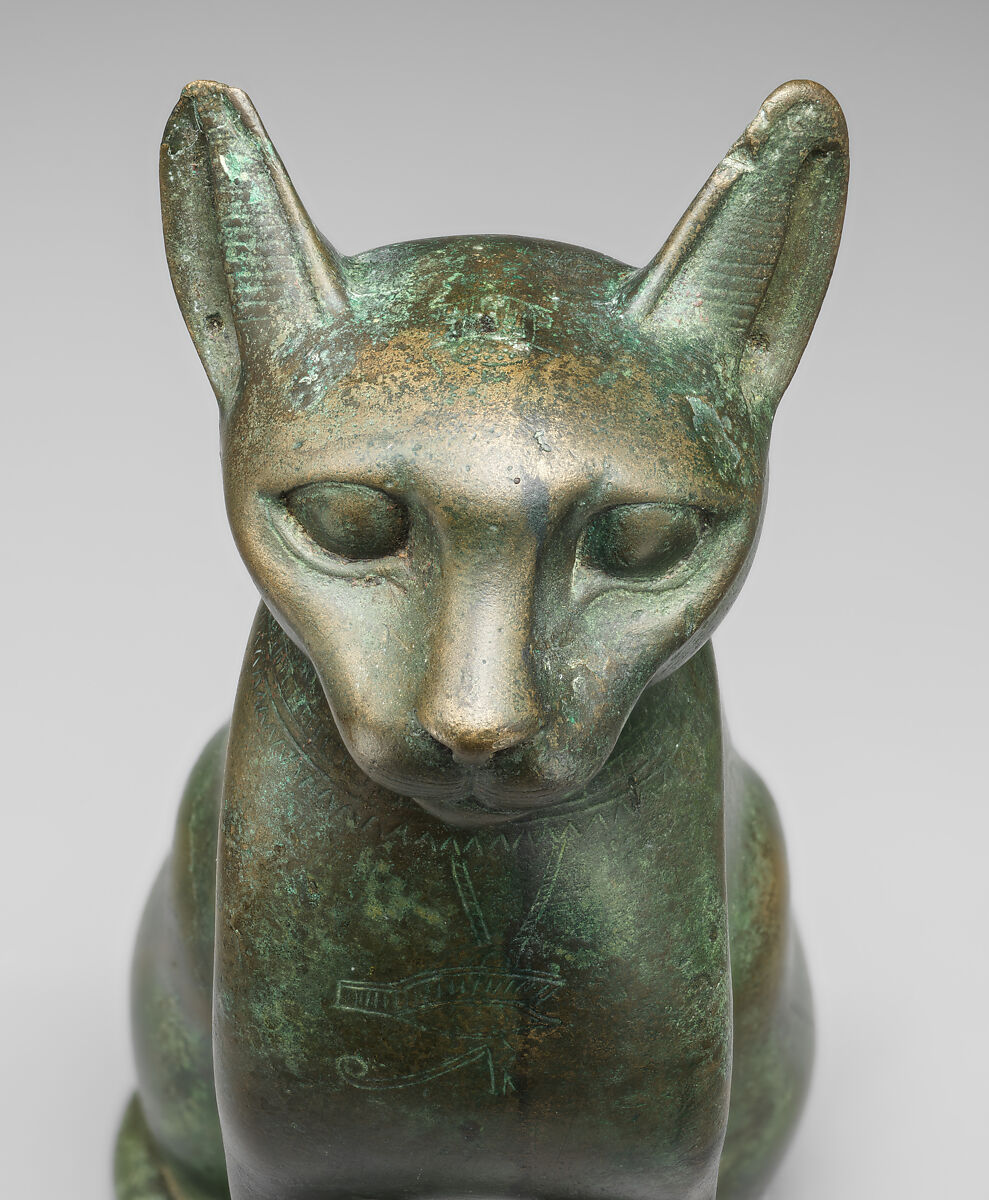The Cat Statuette

The cat was the sacred animal of the goddess Bastet, one of the most revered and benevolent deities in ancient Egypt. To the Egyptians, Bastet and Sekhmet represented two contrasting aspects of divine power. Sekhmet, the lioness, embodied ferocity and destructive strength, while Bastet, the domestic cat, reflected gentleness and protection — qualities that could be sustained through worship and ritual.

In honor of Bastet, devotees offered mummified cats at her temples, often enclosed in elegant bronze or wooden containers. The most significant temples dedicated to her stood at Bubastis and Saqqara, where these cat mummies were ceremoniously buried within sacred precincts.

This particular statue served as the container for a mummified cat. It is clearly not a depiction of an ordinary feline: its pierced right ear once held a gold earring, and an engraved necklace bears a pendant in the form of the wedjat-eye, a symbol of protection. The cat’s poised, upright stance and watchful gaze radiate an air of dignity and quiet majesty, while its sleek form and long limbs suggest restrained power.

Cats were first domesticated in Egypt during the Middle Kingdom, prized for their skill in hunting rodents. By the New Kingdom, they had become cherished household companions. In tomb paintings, cats are often shown sitting beneath their owners’ chairs or aboard hunting boats in the Nile marshes, flushing out birds for their masters — a symbol of both loyalty and grace.












